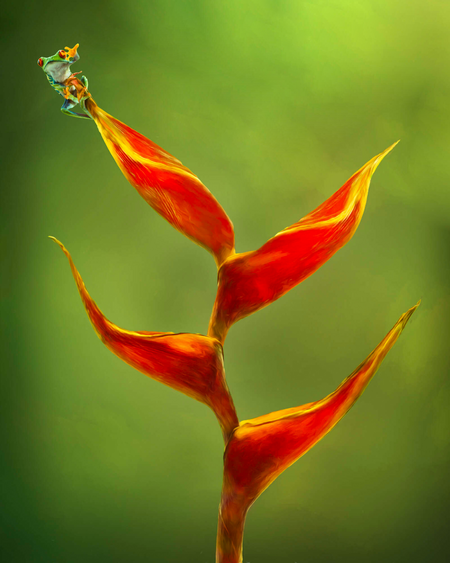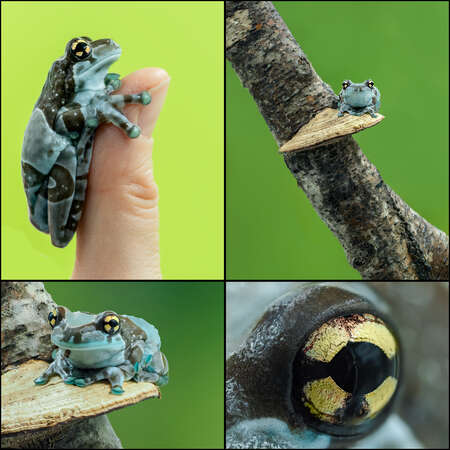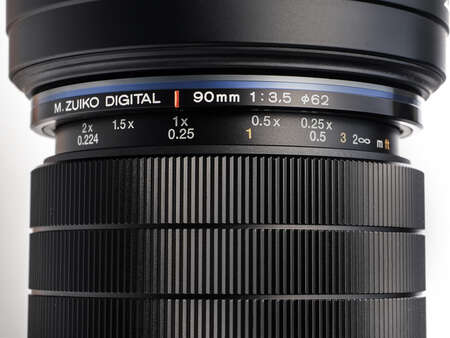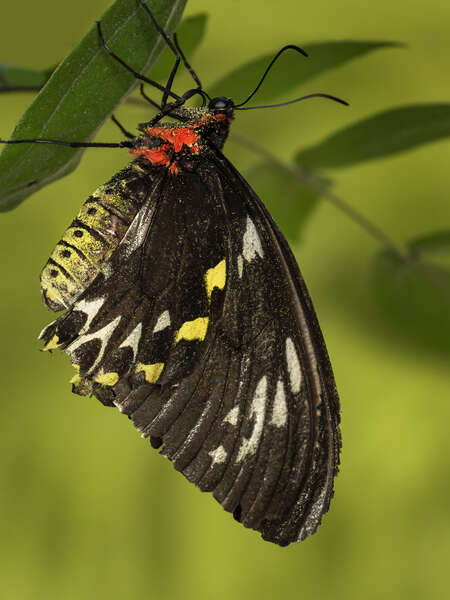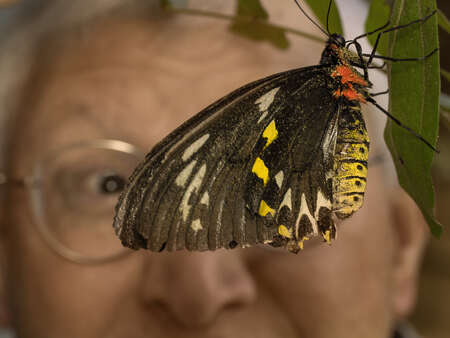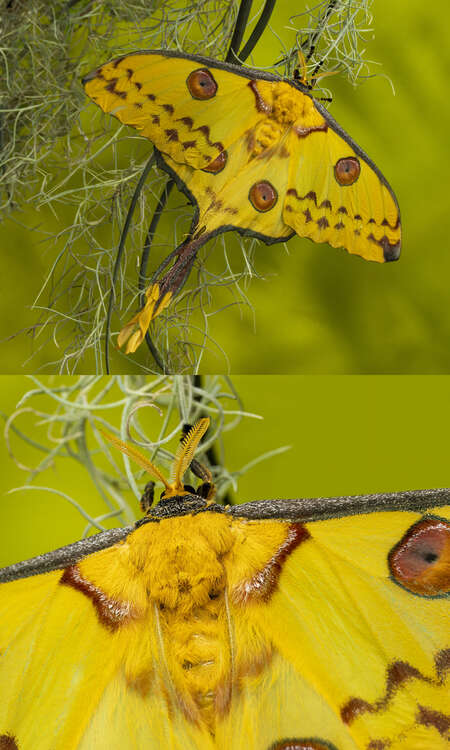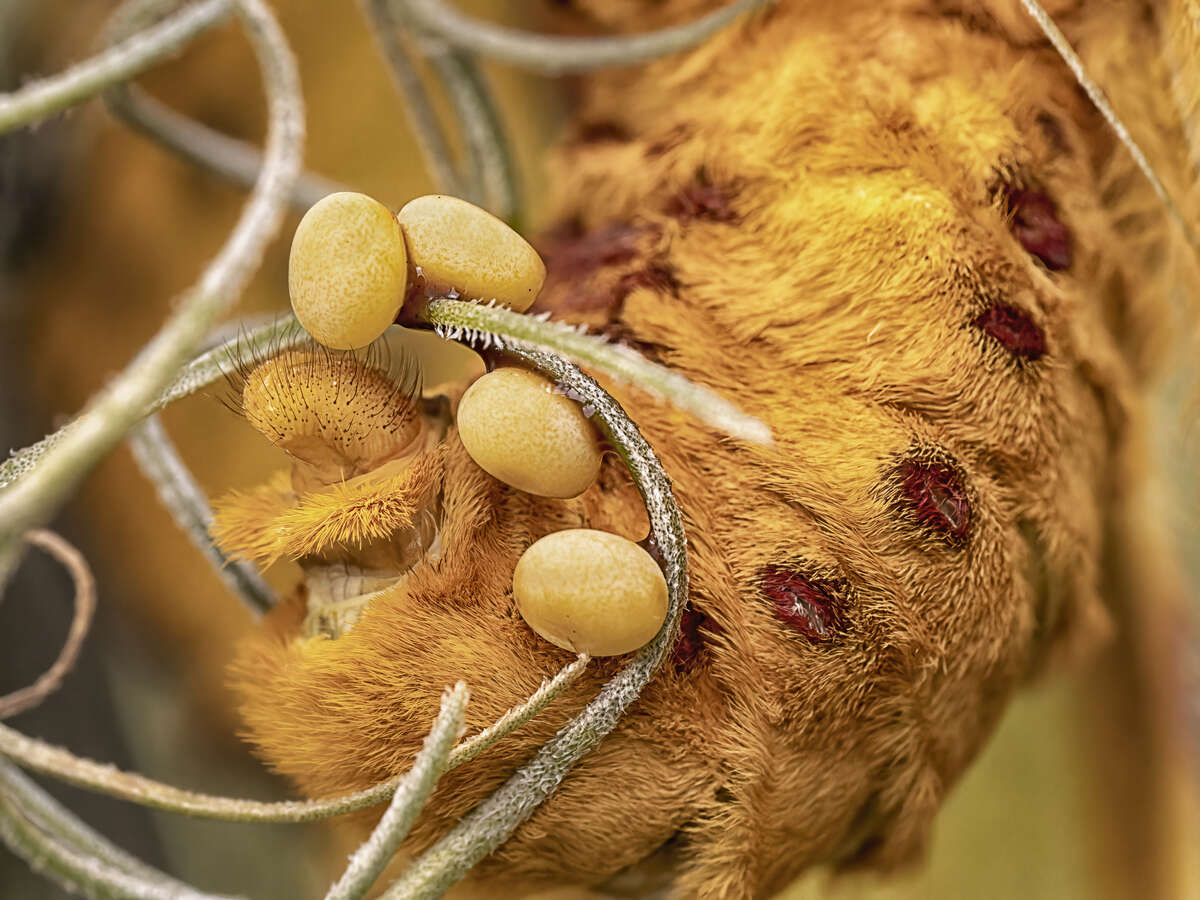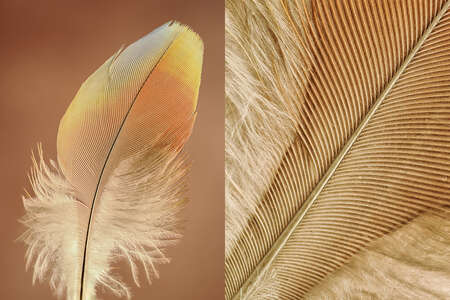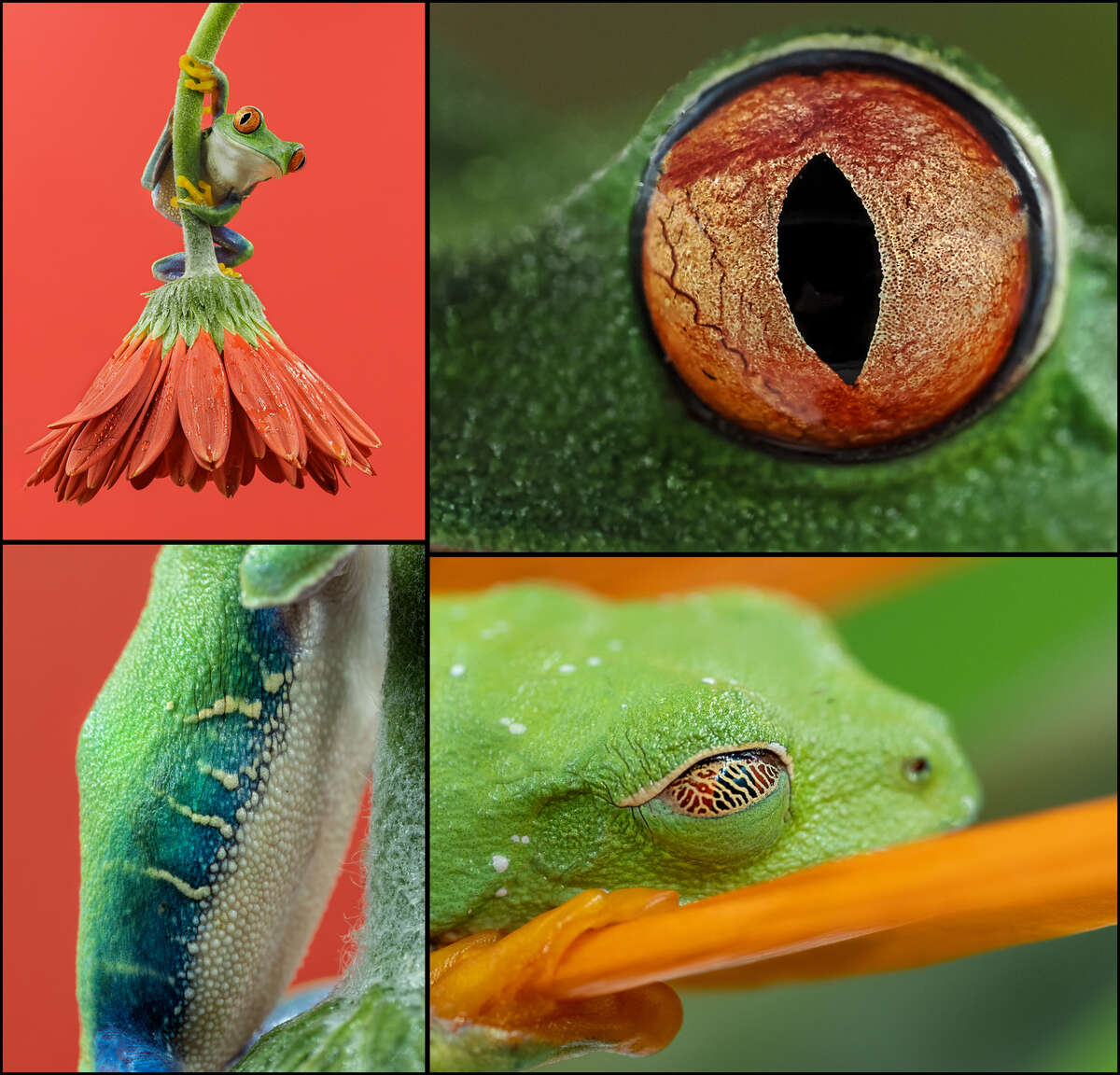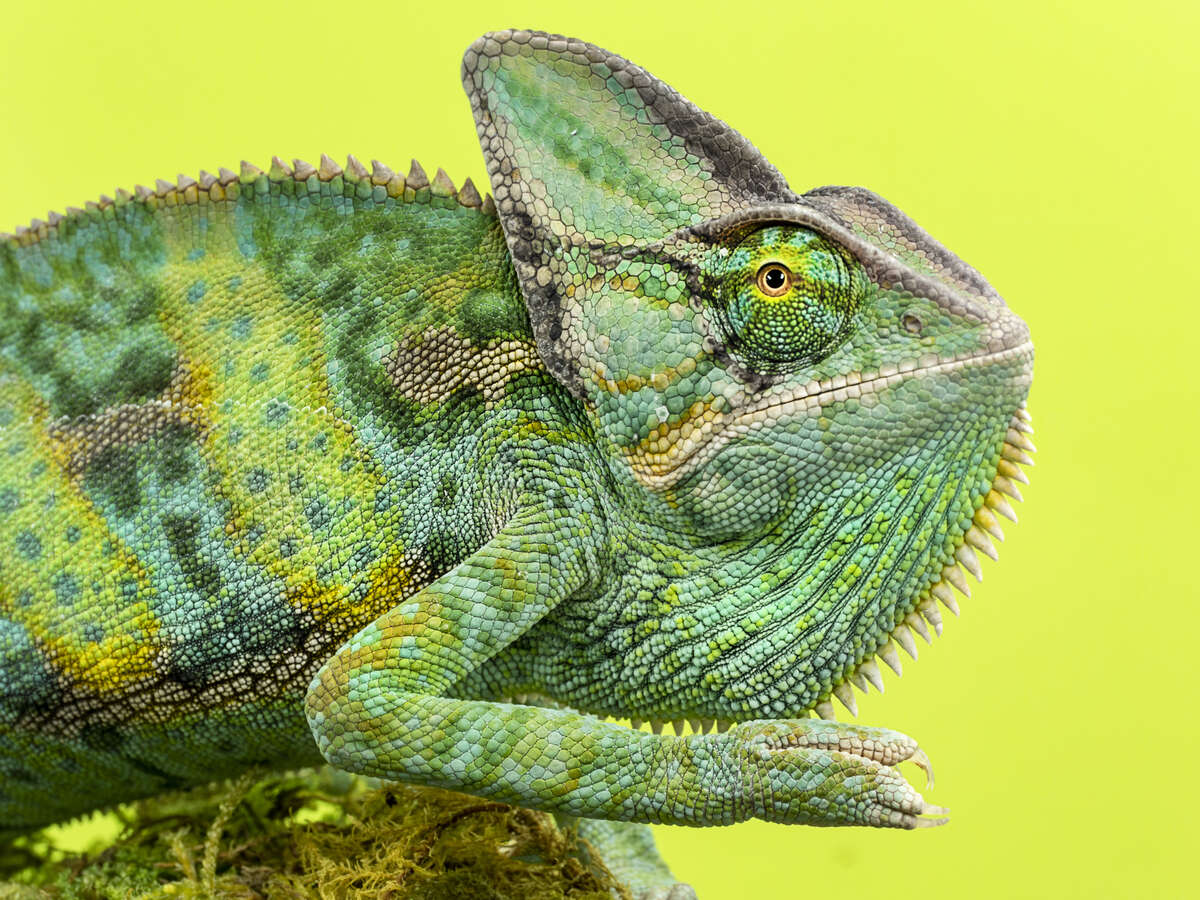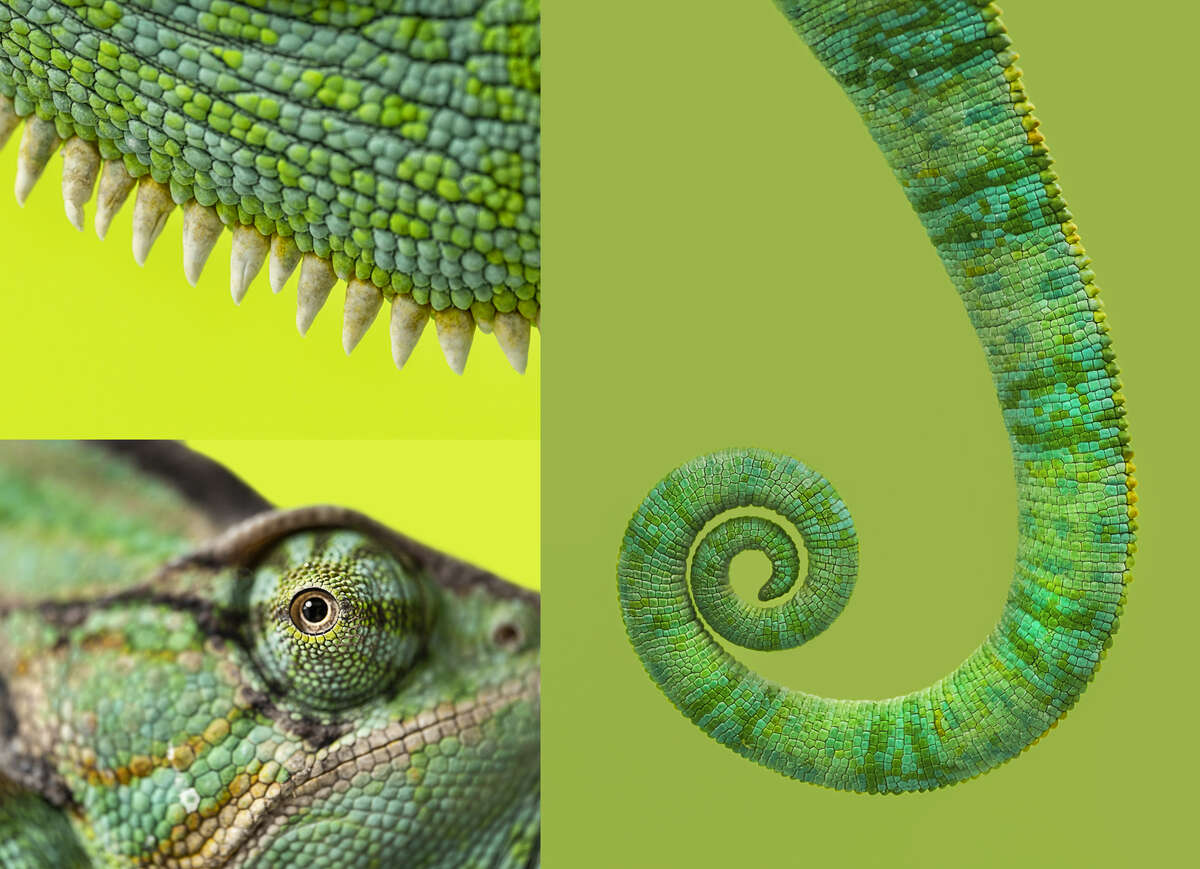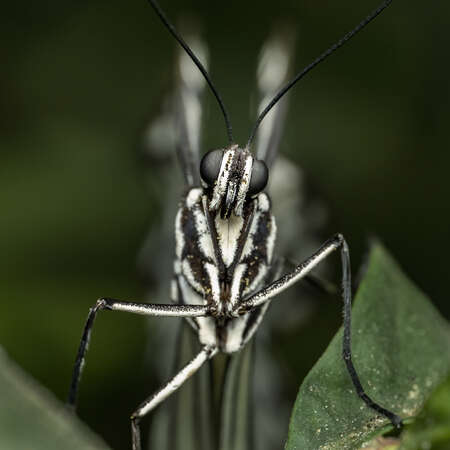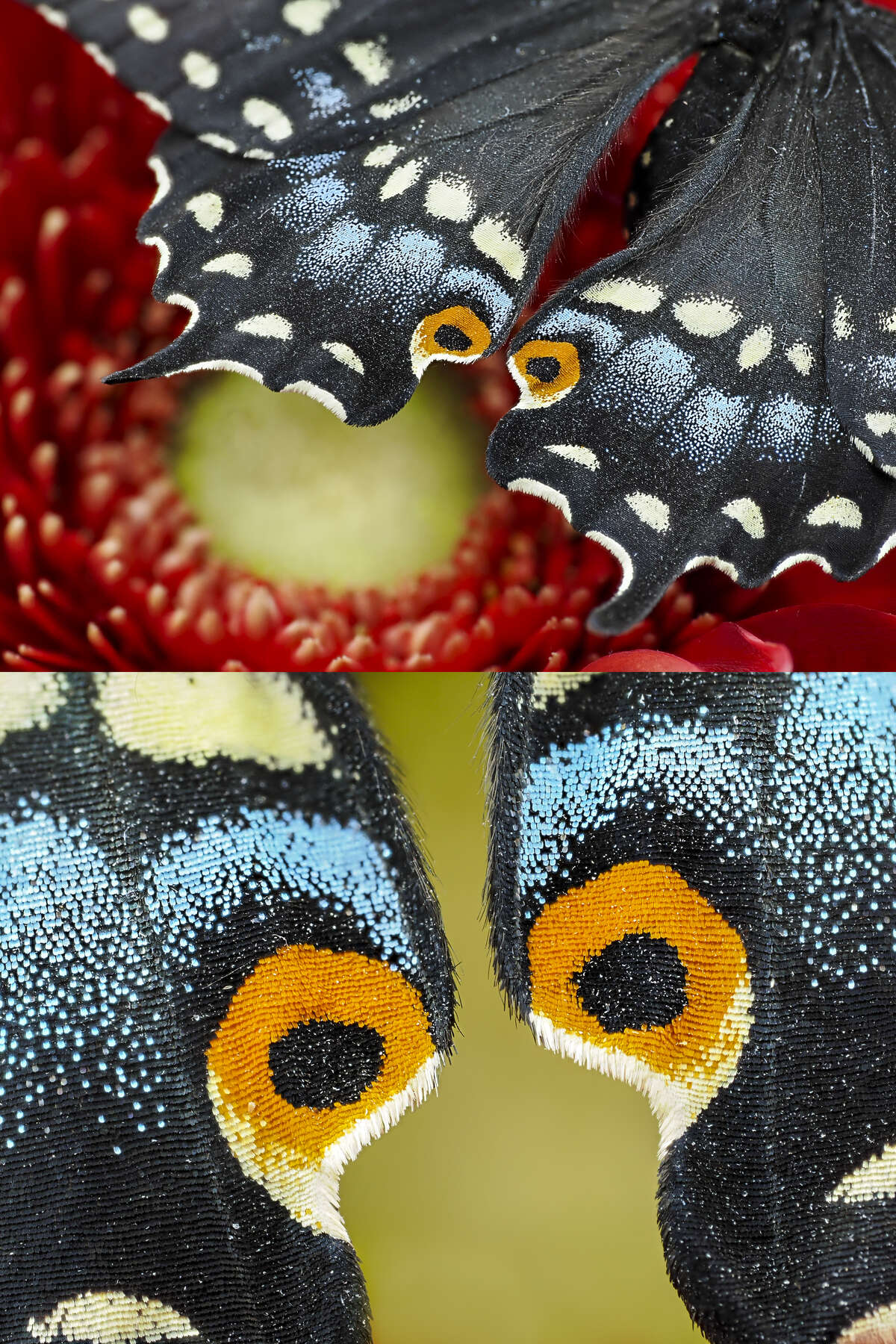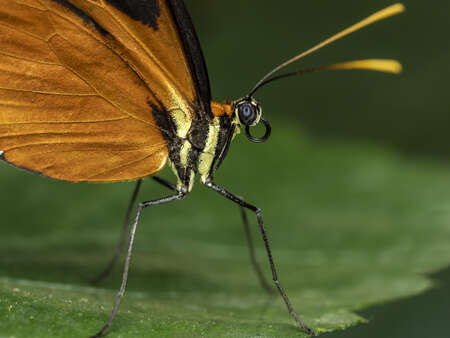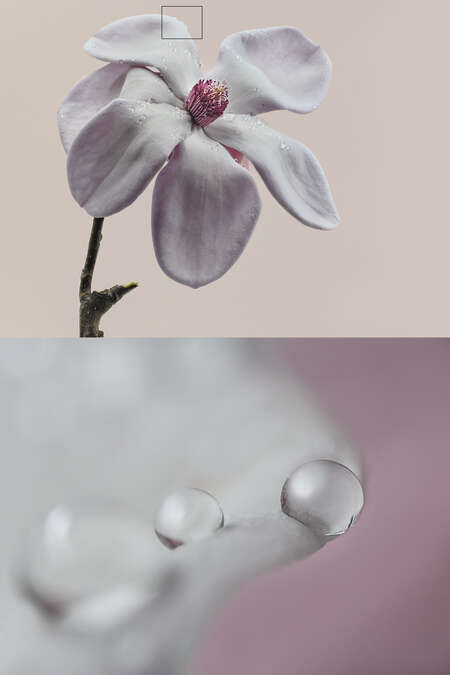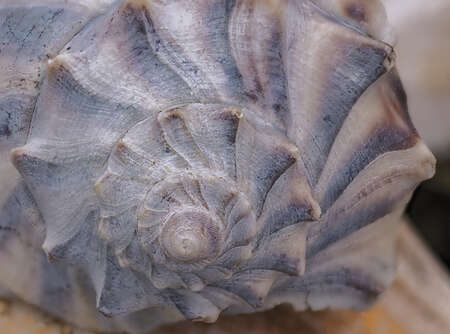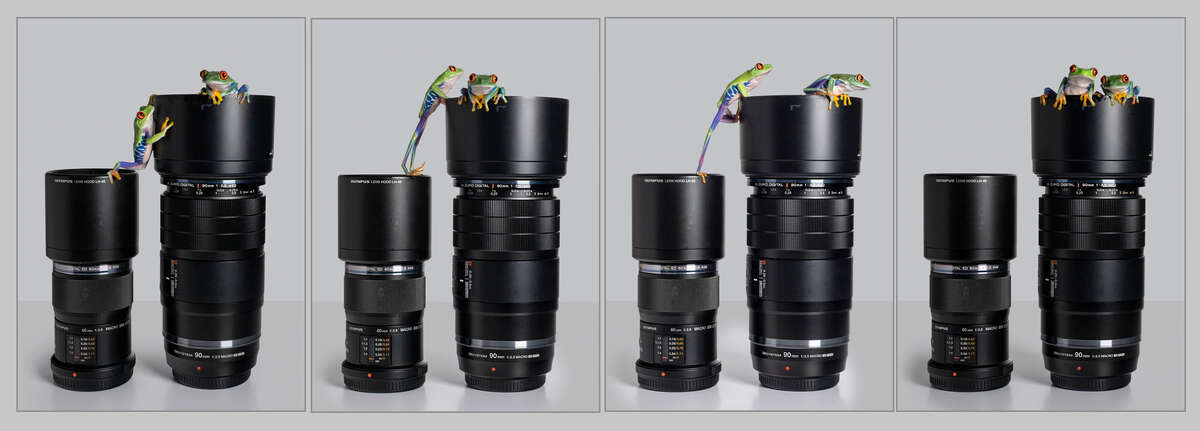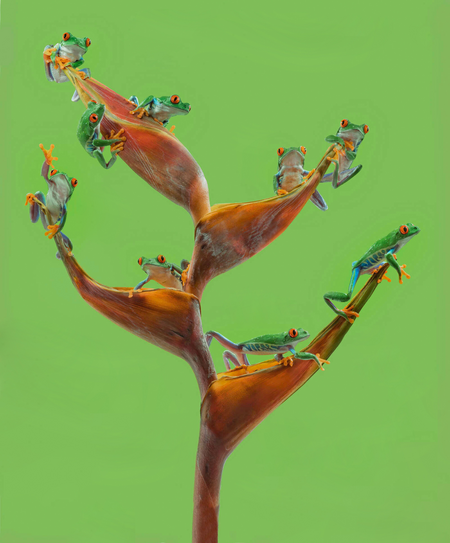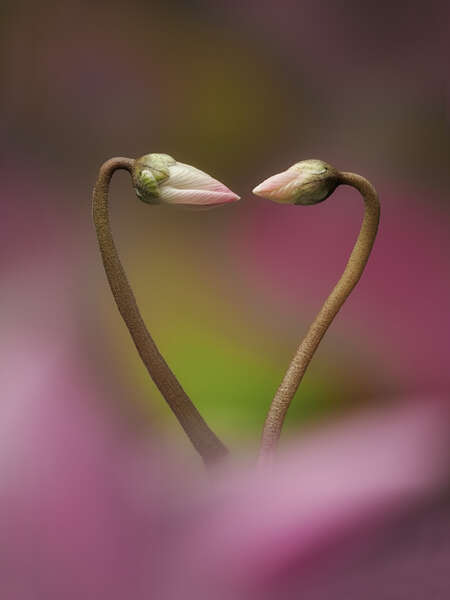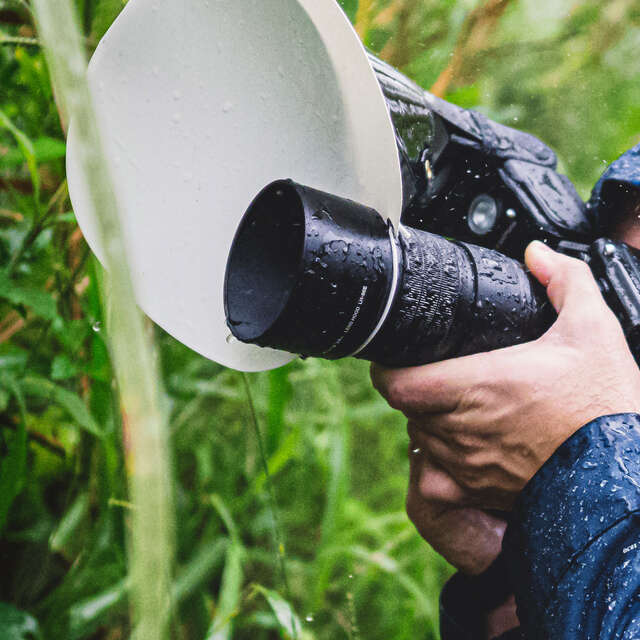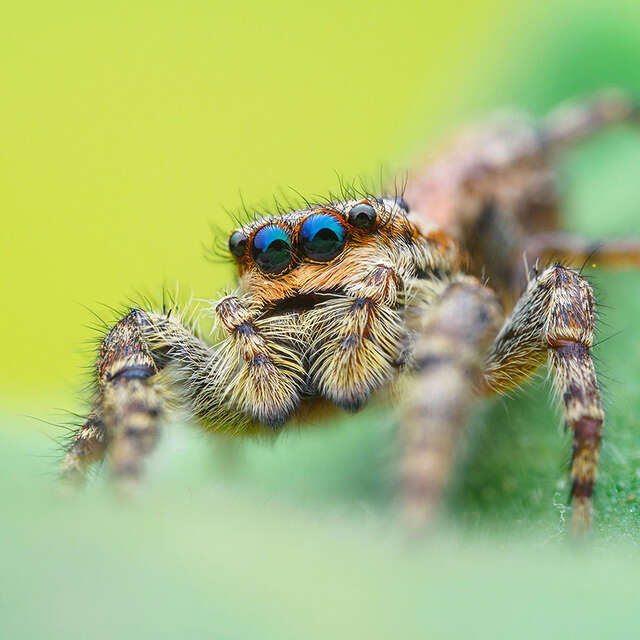Lisa Cuchara here with my first impression of the OM SYSTEM M.Zuiko Digital ED 90mm f/3.5 Macro IS PRO Lens – the first few things that popped into my head were:
- “WOW”
- “Awesome”
- “This is a game-changer!”
- “OM SYSTEM broke through the “conventional belief” that autofocus and high magnification were not compatible.”
- “It’s so wonderfully small and light for 180mm!” [35mm equivalent]
- “The image stabilization really works well”
- “This lens is sooo versatile, with more than Super Macro to telephoto (180mm 35mm equivalent or 252mm with the MC14 teleconverter, or 360mm with the MC20 teleconverter)” so many subjects to use it on.”
- “I just LOVE LOVE LOVE the focus limiter switch that takes me from full focus to Super Macro”
- “I am having soooo much fun using this lens it is hard to sleep!”
Based on the specs and the four weeks of using this lens, I predict that this lens will be as much of a game changer for our photography as Live Composite was and as our Olympus M.Zuiko Digital ED 150-400mm f/4.5 TC1.25X IS PRO lenses were!
I have seen a couple of reviewers comment that it is a shame that the lens was released in the winter in North America. We will have our lenses in March when the flowers start popping up and the insects come out, so it is perfect timing. And for us ambassadors that were trying out the lens in the colder months we just needed to get a little more creative and find some flowering trees, visit a magical butterfly conservancy, find some colorful frogs, etc.
True, I am looking forward to being able to capture dragonflies with this lens, but the cold outside temperatures did not thwart me from falling in love with this awesome 90mm Macro lens. I know that the extended working distance, and the easy 1-2X will really boost our photographic capabilities.
As I mentioned above, the focus limiter switch on the lens is well thought out and very practically placed on the lens barrel. When photographing I often want to capture the essence of my subject as well as the details, photographing the whole subject and then going in closer and closer for the details…
The placement of this focus limiter switch and its ease of use means that with one move of the finger without looking up from my camera I can move in close for Super Macro mode. This is different than the way the focus limiter on the Olympus M.Zuiko Digital ED 60mm f/2.8 Macro Lens which takes conscious effort to get it into life size mode with that spring loaded dial.
Overall, I felt like there was a much shorter learning curve to this lens than there was when I got my Olympus M.Zuiko Digital ED 60mm f/2.8 Macro Lens, which I used as a “regular lens” and a “closeup lens” for a while before I mastered the 1:1 macro capability of that lens. I love the fact that I can push the clutch in and go to 1X or 2X quickly and manually focus and then push the clutch back out if I need Autofocusing for focus stacking or focus bracketing.
Tom and I view our photography as a chance to be able to slow down and appreciate the world around us, whether it is the eyes of a frog, the wings of a bird, the flutter of a butterfly, the undulating hills with shadow patterns, the colors of early mornings or late evenings, or the stars above our head we are grateful that our photography allows us to see everyday life as miraculous. We love exploring and seeing the unseen!
Prior to trying this amazing OM SYSTEM M.Zuiko Digital ED 90mm f/3.5 Macro IS PRO Lens I had my Olympus M.Zuiko Digital ED 60mm f/2.8 Macro Lens on one of my camera bodies almost all of the time, typically taking it off only for night photography. My other body would often have my Olympus M.Zuiko Digital ED 150-400mm f/4.5 TC1.25X IS PRO Lens (I named my lens”Big Bird”) or my Olympus M.Zuiko Digital ED 12-100mm f/4 IS PRO Lens on it and my photography was complete, either closeups and macro alongside birds and other fauna with my “Big Bird” or closeups and macro alongside wide angle vistas and LiveND long exposures and Daylight Live Composite cloud stacking and my day was complete.
I was photographing this Madagascar Moon Moth, loving the fact that I could easily change from photographing the entire moth to concentrating on a cryptic eye mimic spot on the wing to the body of the moth (seeing a hairy but friendly monster on the body, I love pareidolia!). Suddenly this Madagascar Moon Moth began to tremble and shutter.
At first I did not know what was happening and then I moved to take a photo of her underneath and noticed that she was laying eggs. The focus limiter was easily switched back to Super Macro as I saw three eggs and then a fourth one emerged. After a few minutes she went back to sitting contently, having laid dozen or so eggs.
I love being able to “go wide” and then Go Super Macro so easily. When I am photographing I enjoy telling the story and then going in for the details, like: these feathers and this butterfly with the eye mimicry to fool predators, or the eyes and sides of the Red-eyed green tree frog or the eyes, throat and tail of this veiled chameleon.
As I mentioned previously, I felt like there was a much shorter learning curve to this lens than there was when I got my Olympus M.Zuiko Digital ED 60mm f/2.8 Macro Lens.
So what was the learning curve like?
Putting the lens on the camera the balance and ergonomics felt great, that combined with the wonderful and easy to use focus limiter switch resulted in a fantastic first look/feel. I found myself easily auto focusing and easily going from full focus to Super Macro. I loved the clutch and the ability to pull back and easily “dial in” 1X 2X etc. That part was much easier than doing 1X with the 60mm lens.
The butterflies were a single image, while many of the frogs and flowers were focus stacked (>99% in-camera).
Depth of field (DoF):
As you can see in this butterfly image, and macro and super macro images in general, depth of field is shallow, and there is a general learning curve for DoF for all macro photography.
I tried a few different apertures, f3.5 and f4 to look at the bokeh, f8 for when I wanted to focus stack in camera and the background was not too distracting and f11 or f16 when I was in tight or had a clean background and focus stacked. I do the majority of my focus stacking in-camera, only occasionally using focus bracketing when needing more than 15 images and bringing them into Helicon focus.
Bottom line, you can pick up this lens and start using it for nature, wildlife and even portraits right away. You can easily switch the focus limiter over to Super Macro and get in close on frogs and flowers and insects and other critters to get great images right away. But if you are new to macro photography then getting sharp images with sufficient depth of field at 2X and 4X takes some practice and trial and error. But the reward, seeing the unseen, is worth the effort to master these high magnifications.
You can get an idea of the ultra high magnification here with the Magnolia blossom and in the next flower purple statice photo. Be aware, if you are new to “macro” (meaning 1X life size or larger) that along with ultra high magnification comes shallower depth of field, so I often focus stacked (just like I do with my 60mm macro lens). I often am focus stacking, handholding, for 6-10 images (using a tripod if I needed more than 10 or for those rare subjects when I needed more than 15 and have to focus bracket).
When thinking about using this new lens a few things come to mind regarding the focal length and the working distance.
The first is that being a 90mm focal length the photographer does not have to get as close to the subject as they would with the 60mm. For skittish subjects this is a big deal!
The second is that even though both lenses, the OM SYSTEM M.Zuiko Digital ED 90mm f/3.5 Macro IS PRO and the M.Zuiko Digital ED 60mm f/2.8 Macro Lens have VERY close working distances, the 90mm is longer so being 3” away from a critter with the 90mm lens will by default out the photographer further away from the subject than the 60mm, and this increased distance which can often make the critter more comfortable, resulting in better photographs.
This lens pairs also very well with the MC14 and the MC20, not just for creating ultra high magnification images, but also adding to the focal length for non-macro subjects, giving the field of view for non-macro subject 252mm and 360mm (35mm equivalent).
Versatility: One cloudy evening with no apparent hope of a pretty sunset I was photographing shells at 1 and 2X magnification, immersed in the colors and patterns and shapes of the spiral, when all of a sudden the sun broke this small gap at the horizon, breaking through the wall of clouds, right at the time that the sun was setting and the sunlight lit the water a wonderful pearlescent pink color.
I grabbed my tripod and pressed my custom mapped LiveND button on my OM-1 and exposed for 60 seconds to smooth out the water by these weathered wabi sabi pylons. It was wonderful to be able to easily push the switch from Super Macro back to full focus. With three quick button/switch changes (two on the camera thanks to camera button mapping and the focus limiter on the lens) I went from focus stacking at high magnification to long exposures with LiveND at 180mm. Wow! The versatility is wonderful!
So, the big question for me is -- will my beloved M.Zuiko Digital ED 60mm f/2.8 Macro lens become a vestigial lens, staying home with my Olympus M.Zuiko Digital ED 300mm f/4 IS PRO Lens (who has barely left the closet since I metaphorically “superglued” my Olympus M.Zuiko Digital ED 150- 400mm f/4.5 TC1.25X IS PRO Lens to one of my OM-1 camera bodies) and with my M.Zuiko Digital ED 7-14mm f/2.8 PRO Lens (which has become a “vampire lens”, only coming out at night for milky way) after the purchase of my M.Zuiko Digital ED 8-25mm f/4 PRO Lens???
This M.Zuiko Digital ED 90mm f/3.5 Macro IS PRO Lens has so many wonderful attributes I almost had to pinch myself. I had trouble sleeping when I first got the lens, it was just too tempting to use it and explore the possibilities with this lens. Yes, I love my 8-25mm and my 40-150mm, but when those lenses arrived, I placed them on the camera like bread and butter and peanut butter and jelly. I loved the images I obtain with those lenses, but they didn’t tempt me to stay up into the wee hours and get outside the way this 90mm lens does.
I was amused and amazed by how much I just loved using the 90mm lens, it feels good in my hands, it balances well with the OM-1 camera body (great ergonomics), it weighs less than my 12-100 (and much, much less than my previous Canon 180mm), I can easily handhold it, even vertically with the LCD screen flipped out to make composing easier. Knowing that it is IP53 rated (splash, dust and freezeproof) and fluorine coated I don’t have to worry when I take it out into the elements.
This image of the two cyclamen buds depicts my overall reaction to and feelings for this new OM SYSTEM M.Zuiko Digital ED 90mm f/3.5 Macro IS PRO lens! LOVE IT!
Featured Products:
Want to Learn More from Lisa?
Watch the recording of our one-hour live with Lisa and fellow OM SYSTEM Ambassador Emilie Talpin. They share their first impressions of the lens, as well as tips and their close-up photography.
Lisa and Tom are photographic artists and workshop leaders who love to share their passion with others. They love photographing almost every subject, but are especially drawn to night photography, light painting, urban exploration, nature photography, and creative photography. Their photography allows them to pay attention to the details, to be mindful, and to appreciate all of the beauty and nuances of our world.
CONNECT WITH LISA AND TOM
Website: Photography by Lisa and Tom
Instagram: @lisatom.photos
